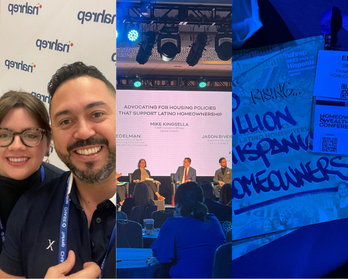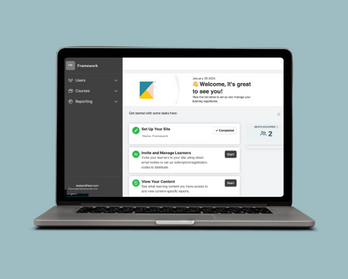If you’re like most of us, you’re probably not new to the concept of insurance. Car, renters, health insurance… it’s nearly impossible to be an adult without having had to secure a policy somewhere along the way. Nevertheless, the number of insurance policy types that come with homeownership can leave anyone’s head spinning. Even the savviest homebuyers get overwhelmed by the different types and associated costs—never mind the decisions.
While it may not be the most exciting topic, buying a home means familiarizing yourself with all the policies that accompany such a significant purchase. At the very least, you’ll want to understand the purpose and estimated cost of each policy type. Not to mention whether or not they’re optional or required.
Here’s a breakdown of the four main types, all in one place.
Homeowners insurance
a.k.a. Hazard insurance
What it’s for. This policy protects you from damage to or loss of your home and personal property, or from lawsuits related to things that happen on your property. You might be surprised by what this policy does and does not cover, so be sure read up on our 8 common myths about homeowners insurance.
How much. The cost of your policy will depend on the type, condition, and location of the home you’re buying. If you’re looking to cut costs here, check out or post on seven ways to save.
Required or optional. Sorry, this one’s not optional. And in some cases you may be required to pay your policy for the first year in full before closing.
Private mortgage insurance (PMI)
a.k.a. Mortgage Insurance (MI), Mortgage Guarantee, Mortgage insurance premium (MIP)
What it’s for. Private mortgage insurance protects the lender (not you) if you fail to pay your mortgage and end up in foreclosure.
How much. The cost on this one will vary too, depending on your equity (the size of your down payment) and credit score. Certain loan programs also offer reduced premiums. Check with your lender, as your PMI cost should be in your loan estimate and closing disclosure. In general, PMI will cost around 0.3 percent to 1.15 percent of the original loan amount per year, depending on the size of the down payment and loan type. If you’re taking out an FHA loan, you’ll pay an MIP. Rates and conditions may differ, but the concept is the same.
Required or optional. If you’re able to put down 20 percent, or snag a special loan program, you can skip the PMI. But most first-time homebuyers have to pay up. After all, the median down payment for first-time homebuyers in 2016 was just 4 percent. In most cases, your PMI cost will be included in your monthly mortgage payment. Remember PITI? That’s the acronym for mortgage payments that are the sum of monthly principal, interest, taxes, and insurance—that’s right, that last one is the “I” for this insurance (along with homeowners insurance).
Mortgage life insurance
a.k.a. Mortgage (payment) protection insurance
What it’s for. This type of insurance pays the mortgage off if a homeowner dies, loses his or her job, or becomes disabled.
How much. A policy like this will vary depending on the cost of your home and what’s included in the policy itself. But a bare minimum policy on a $120,000 mortgage will run roughly $50 a month.
Required or optional. Yes, this one is optional. Typically traditional life insurance is a better option here anyway. But if you’re not sure which way to go, this Bankrate article does a good job laying out the pros and cons. BTW, be prepared for the onslaught of “junk mail” solicitations you’ll receive as a new homeowner. Mortgage life insurance offers will most definitely be among them, and some of the less scrupulous vendors will use messaging that may make you panic… don’t. These solicitations are normal and a result of your home purchase being recorded as public record. Here’s an entertaining post by Quicken Loans on how to manage all that junk!
Title insurance
a.k.a. Owner title insurance, Lender title insurance, Loan policy
What it’s for. Title insurance protects lenders and homebuyers from financial loss if ownership of a property is challenged. You’d be surprised how many times a transfer of title is not as clear as it seems. In more than one third of public record title searches, sellers either don’t have absolute ownership of the property or there is a problem with the title that needs to be fixed before closing. This could include unpaid taxes on the property (called a tax lien), a forged signature somewhere along the line, or any number of clerical errors with the record.
Owner title insurance (the lender has a separate policy) covers the cost of any errors, unpaid liens, or ordinance violations that you have to pay to remedy. And most important, it covers the actual loss of your home if at any point the title is challenged and you lose.
How much. This is covered by a one-time fee. The average is $1,000 per policy (for either owner or lender title insurance), but it varies widely by state and the purchase price of your home.
Required or optional. Both. Lender title insurance is required, though in many states the seller covers the cost. Owner title insurance is optional, but we don’t recommend skimping on this expense. The $1,000 you spend at closing is well worth the permanent peace of mind, not to mention it could save you thousands or hundreds of thousands of dollars down the line.
Ready to take the next step in your homebuying journey with all the confidence of a smart and savvy homebuyer? Our comprehensive online homebuyer course is simple and easy to access on your computer, tablet, and mobile device. It’s all the information you need, all in one place. Go ahead and get started today.




